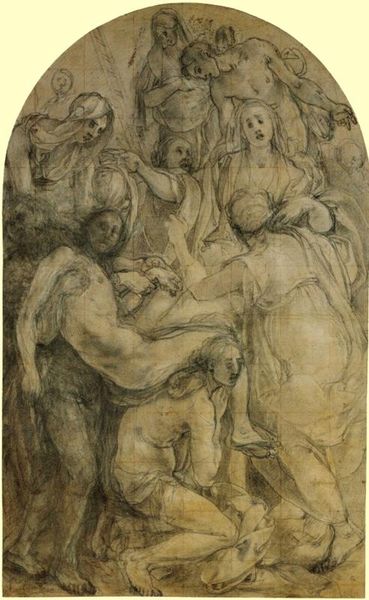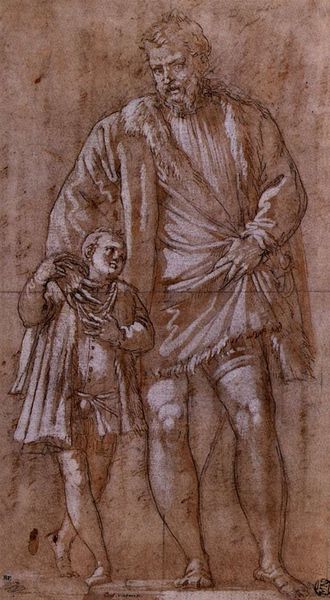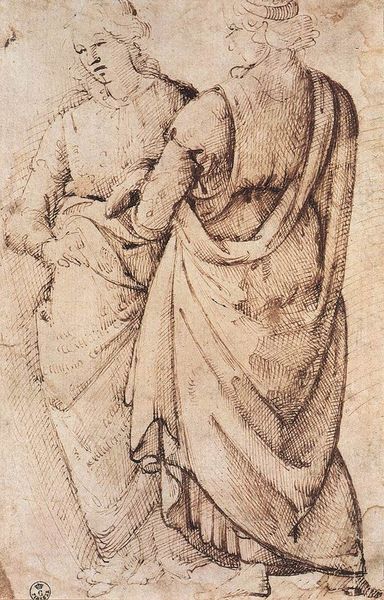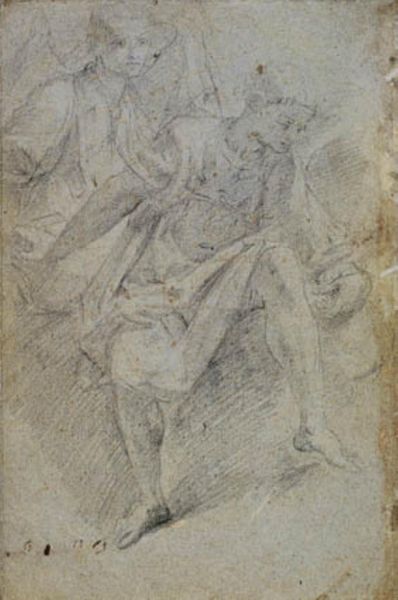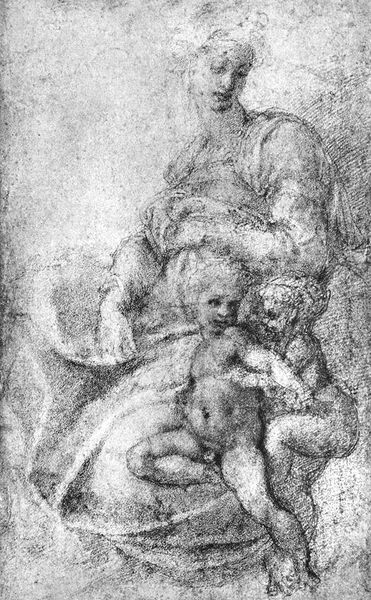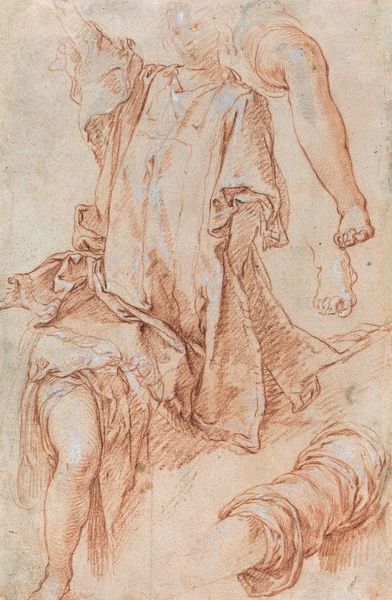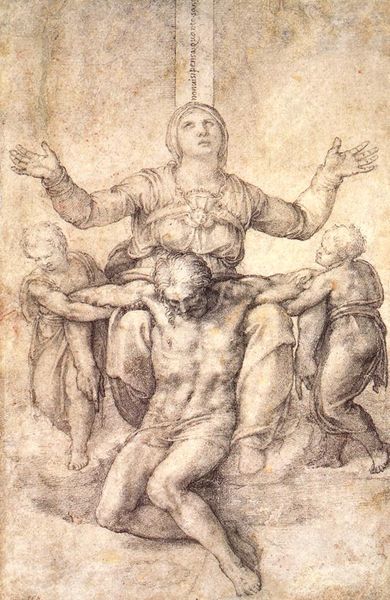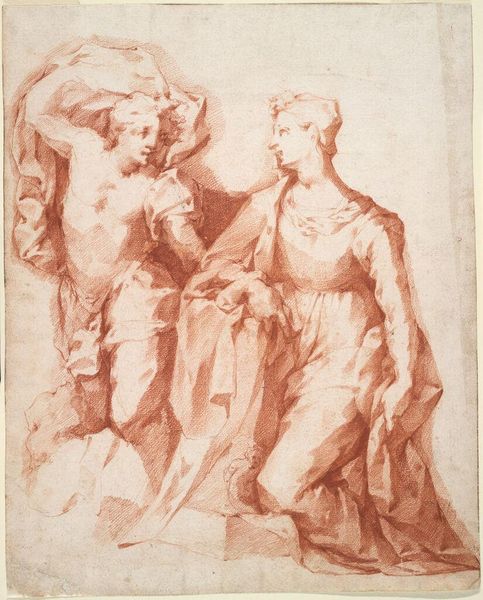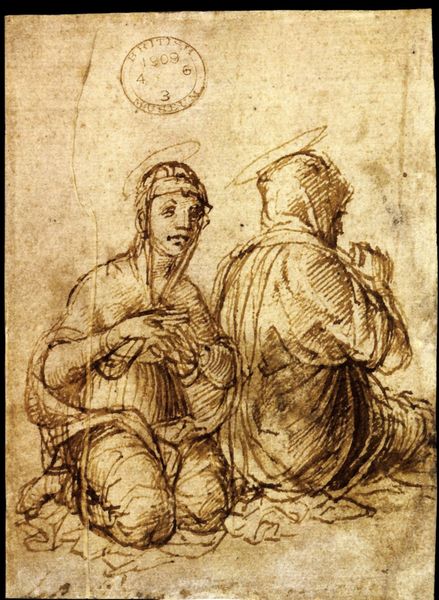
drawing, pen
#
drawing
#
allegory
#
narrative-art
#
head
#
charcoal drawing
#
figuration
#
11_renaissance
#
charcoal art
#
christianity
#
pen
#
history-painting
#
italian-renaissance
Copyright: Public domain
Curator: Welcome. We’re looking at Andrea Mantegna’s drawing, "Judith with the Head of Holofernes," created around 1495, a pen and charcoal work depicting a pivotal biblical scene. Editor: It strikes me immediately as possessing a quiet brutality. The somber tones, the weight of the fabric... there's a palpable tension captured in what is essentially a monochromatic study. Curator: Precisely. The linear precision and controlled chiaroscuro emphasize the solemnity of the moment. Notice how Mantegna uses the fall of light to direct the viewer's gaze to the head of Holofernes, effectively staging the drama. The textural contrast is also striking, juxtaposing Judith’s delicate features against the coarse fabric. Editor: And what a potent political symbol she became! Judith embodies the power of the powerless against tyranny, doesn’t she? Especially in times of social unrest and war, this narrative would be a rallying cry. Curator: Absolutely. Artists depicted her at key political moments, imbuing the figure with an urgency connected to specific local oppressions. This drawing exists within that lineage, albeit with Mantegna's distinctive refinement. The gaze that Judith shares with her maidservant feels almost conspiratorial. Editor: The way Mantegna positions Judith feels calculated. Her slight contrapposto, the carefully arranged drapery—it’s as though she's been momentarily frozen, immortalized as both a heroine and a potential transgressor. I wonder what kind of patron would have commissioned this drawing. Curator: That’s always the critical question! I believe a powerful, likely religious figure, desired a constant reminder of the importance of valor in their fight against corruption, embodying her virtue for political aims. Editor: A chilling thought, to make this act of violence such a commonplace part of the visual culture! I come away with a lingering question about the role imagery played in perpetuating violence as virtue in early renaissance Italy. Curator: An apt and deeply relevant inquiry. These explorations into history continue to inform contemporary considerations of virtue, representation, and violence.
Comments
No comments
Be the first to comment and join the conversation on the ultimate creative platform.


